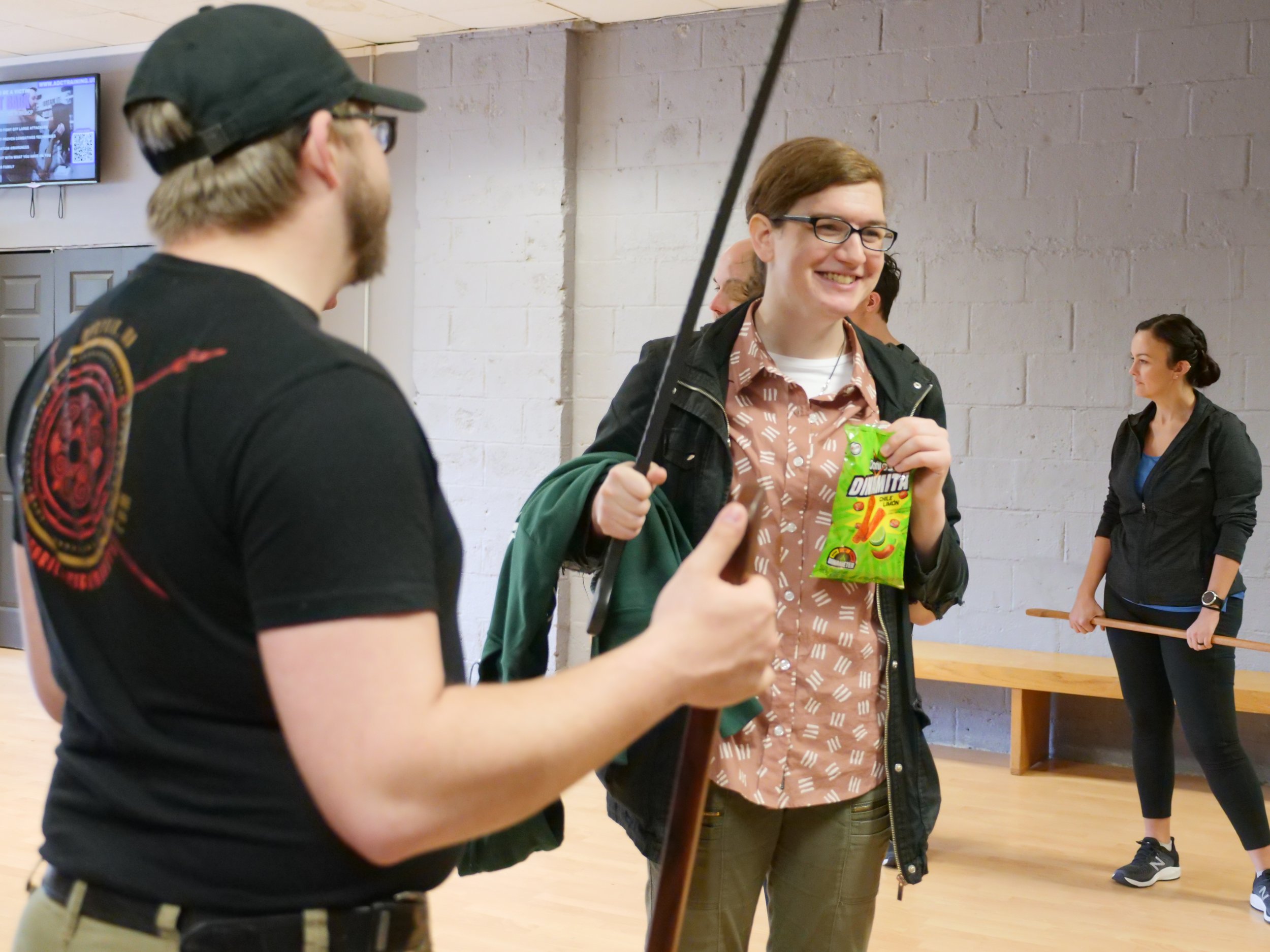
OUR IRISH STICK STUDY GROUP
Our school is an official member of the Whiskey Stick Faction, led by Doyle instructors John Borter and Trish Chiovari. Our Doyle Irish Stick Fighting study group meets every Tuesday from 6:00 PM to 6:30 PM, covering various elements of the system, including stance, footwork, and stickwork. The group is currently headed by Ludus Ferocia instructor Thomas Catron, a level 2 practitioner of Doyle Irish Stick. This study group welcomes both experienced and beginner practitioners of Irish stick fighting.
Feel free to reach out about our classes at any time if you have questions! Visit our GEAR GUIDE page to see what equipment you need to get started!
Mondays at 6:30PM-7:30PM
GALLERY


















THE SHILLELAGH - THE IRISH STICK
HISTORY OF IRISH STICK FIGHTING
Irish stick fighting has a rich history rooted in centuries of self-defense traditions, with the practice of bataireacht potentially dating back to the Bronze Age, a time when metal was scarce but sticks were abundant. Similar to bataireacht, the shillelagh became a prominent weapon in Irish culture and appears in ancient stories, such as The Destruction of Da Derga's Hostel. By the 18th century, bataireacht was closely linked to Irish "factions," or gangs, who engaged in large-scale brawls at social gatherings like county fairs, weddings, and funerals. This culture of organized violence, often tied to political and class struggles, was explored by historians like Carolyn Conley, as well as authors William Carleton and James S. Donnelly Jr. In the 19th century, these factions grew into more structured regional groups, such as the Caravat and Shanavest, whose periodic conflicts became significant social disturbances. However, as factional violence became suppressed and sports like hurling rose in popularity, bataireacht began to fade by the early 20th century. Today, the tradition survives mostly through a few families who have preserved their distinct styles, ensuring the practice continues.
THE DOYLE STYLE: DANCE OF THE WHISKEY STICK
Doyle Irish Stick Fighting, known as Rince an Bata Uisce Bheatha or the Dance of the Whiskey Stick, is a dynamic and highly effective two-handed combat system that was developed by the Doyle family in Ireland over 200 years ago. What sets this style apart from other Irish stick fighting systems is its use of the stick much like a boxer would use their fists, offering full-body protection and enabling quick, powerful strikes from either end of the stick. This distinctive approach to stick fighting evolved from the adaptation of boxing techniques by a member of the Doyle family, who initially practiced one-handed stick fighting before transitioning to a more aggressive, two-handed, close-quarters combat style.
The system was passed down through the generations, with Maurice Doyle bringing it to Newfoundland in the early 1800s. There, the Doyle family continued to refine and preserve the techniques. In 1998, Glen Doyle, with his father Gregory Doyle's blessing, began teaching the system outside the family to ensure its survival. The term Dance of the Whiskey Stick was used to refer discreetly to their training, maintaining a level of secrecy around the methods. Today, the system is overseen by its chieftain, Bernie Leddy, in Ireland, continuing the legacy of the Doyle family's martial art. For more information on the Doyle style, you can visit the Doyle Family System website.



